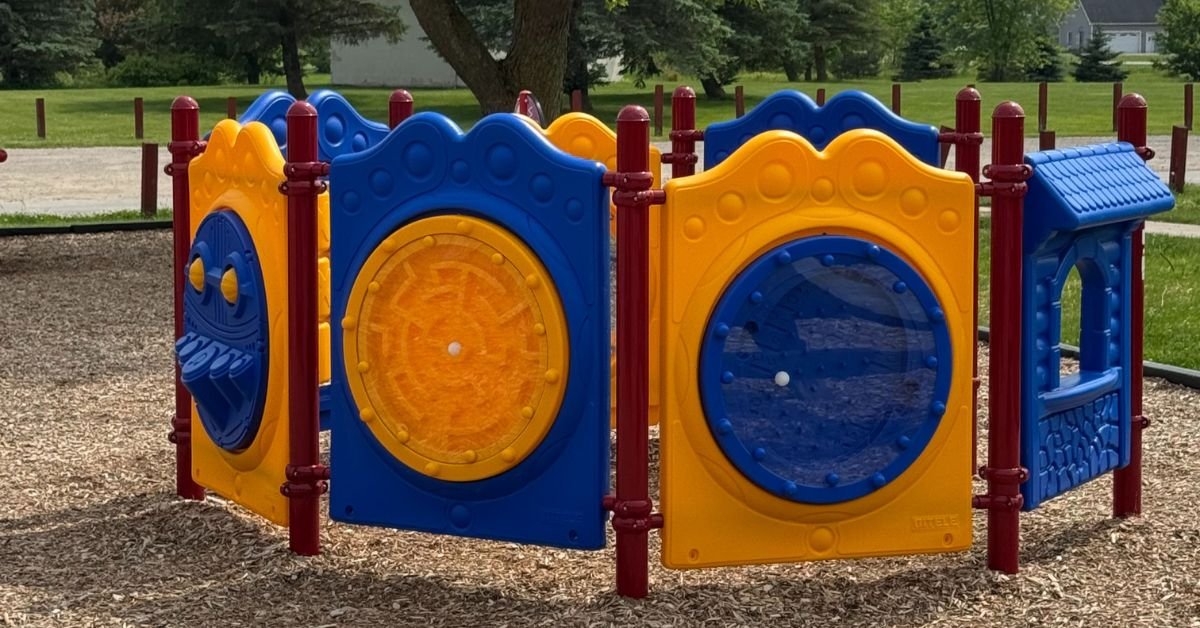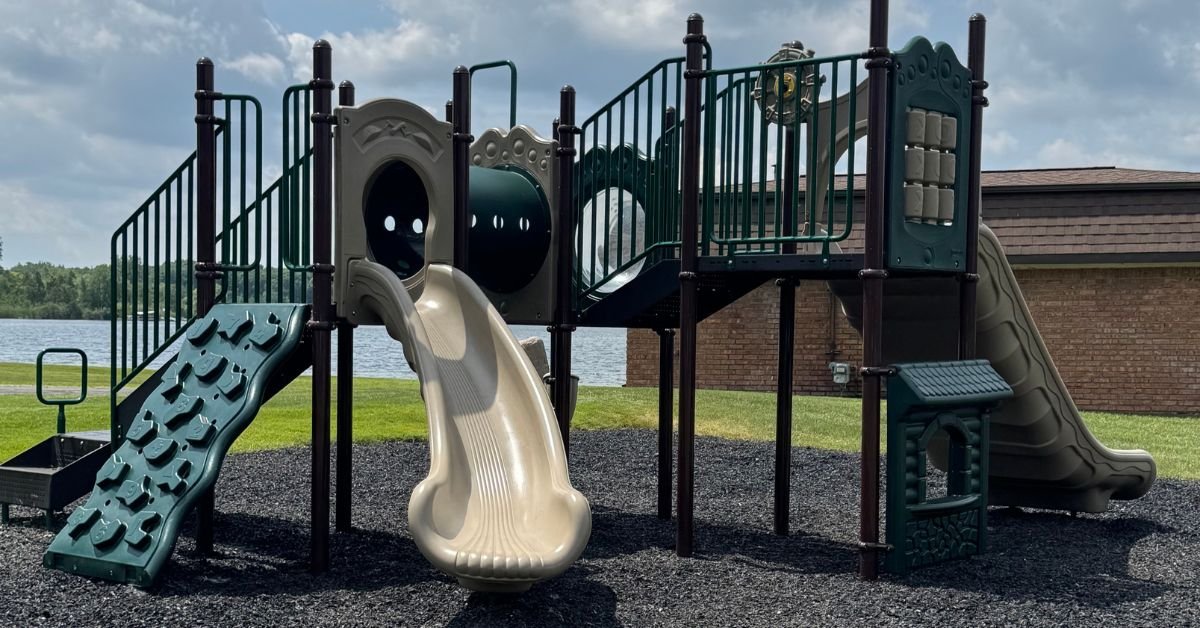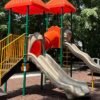
Playgrounds are more than just spaces for kids to run around; they’re environments that contribute to a child’s growth, development, and socialization. However, not all playgrounds cater to diverse needs, leaving many children excluded from the joy and benefits these spaces can provide.
Inclusive playgrounds address this issue by creating areas where kids of all abilities can play together. From promoting cognitive and physical development to fostering empathy and connection, discover the benefits of inclusive playgrounds for kids.
Creating Spaces for Every Child
The design of an inclusive playground should keep children of various abilities in mind so that kids with physical, sensory, or cognitive disabilities can actively participate and engage. Features like ramps, wide pathways, sensory equipment, and adaptive swings allow children with disabilities to freely explore and play in a way that suits their abilities.
For instance, a child who uses a wheelchair can join their peers on the playground using access ramps and ground-level play structures. This kind of design is essential for breaking barriers and providing equality in play. No child will be left on the sidelines, enhancing their sense of belonging and empowering them to feel like an integral part of the group.
Promoting Physical Development
Playgrounds naturally encourage children to move, climb, run, swing, and jump, activities that aid in physical development. For children using inclusive playgrounds, these designs provide more opportunities for dynamic movement for children of all abilities. Children with disabilities can access specialized equipment, like adaptive seesaws or transfer stations, to safely engage in physical activities.
This equipment builds strength, coordination, balance, and motor skills, all of which are critical for growing and thriving. Additionally, inclusive playgrounds often incorporate sensory-rich qualities, like textured surfaces or sound-based play areas, which improve sensory processing and boost body awareness in children.
Encouraging Socialization and Friendships
Inclusive playgrounds provide more than the chance to play but also vital opportunities for social interactions. By bringing together children of varying backgrounds and abilities, these spaces create an environment where kids can connect, collaborate, and develop friendships. Mutual understanding and empathy are often by-products of these interactions.
For neurotypical children, playing alongside peers with disabilities can cultivate compassion and inclusivity, while children with special needs get the chance to build social skills and confidence within an accepting group setting. These shared activities foster communication and teamwork, helping kids learn from one another while developing a sense of community.
Fostering Cognitive Development
Play is essential for cognitive development, aiding in problem-solving, creativity, and decision-making abilities. By incorporating a variety of play equipment and experiences, inclusive playgrounds stimulate cognitive growth for all children. Activities like sandbox building, puzzle-solving play panels, and water games engage a child’s curiosity and creativity, encouraging them to think critically while having fun.
For children with disabilities, inclusive playgrounds provide unique opportunities to overcome challenges, explore new sensory experiences, and strengthen their mental focus. These diverse features help children expand their understanding of the world around them, preparing them for challenges beyond the playground.

Emotional Benefits of Inclusion
Every child deserves to feel included and valued. Inclusive playgrounds give children with disabilities the joy of being a part of a space that feels welcoming and adaptable to their needs. This inclusivity fosters positive emotional growth as children develop confidence, self-esteem, and resilience in their ability to engage and interact.
For neurotypical children, witnessing and participating in an inclusive environment teaches powerful lessons about acceptance and kindness. An inclusive playground can shape their emotional intelligence, encouraging them to develop respect for diversity and differences from an early age.
Benefits for Families and Communities
The impact of inclusive playgrounds extends beyond the children to families and entire communities. For parents of children with disabilities, finding accessible recreational spaces can be challenging. Inclusive playgrounds provide a setting where families can relax, knowing their child can play safely and happily. This inclusivity fosters a stronger sense of camaraderie among parents and caregivers, allowing them to connect and share experiences.
Communities also benefit from inclusive playgrounds, as these spaces often become hubs of activity and socialization. Inclusive playgrounds reflect a commitment to equality and diversity while promoting healthy, active lifestyles for children of all ages and backgrounds. Such playgrounds help build stronger, more cohesive neighborhoods that prioritize connection and understanding.
Addressing the Need for Inclusive Playgrounds
Despite their advantages, inclusive playgrounds are not yet the standard in every community. Many traditional playgrounds exclude children with disabilities because of inaccessible designs, insufficient space, or a lack of adaptive equipment. Advocacy and investment in inclusive playground initiatives are essential so that all children have access to play.
Local governments, nonprofits, and community groups can work together to prioritize inclusive playground development. Partnering with designers and manufacturers specializing in accessibility ensures these spaces are thoughtfully created to accommodate diverse needs.
Designing an Inclusive Playground
An inclusive playground incorporates innovative equipment and design choices to remove barriers for different abilities. Proper planning involves considering factors such as:
- Accessibility: All pathways, entrances, and play areas must be easy for kids with mobility aids to access.
- Variety of activities: Incorporating multisensory elements like sound-making equipment, braille games, and tactile panels engage children with sensory disabilities.
- Safety: Using soft, nonslip surfaces and safe, durable materials creates a secure environment for all users.
- Social interaction zones: These areas should encourage cooperative play, such as group swings or themed activity stations.

Moving Toward a Brighter Future
The advantages of inclusive playgrounds for kids can transform communities by allowing all children, regardless of abilities, to experience the joy and power of play. These spaces foster physical, cognitive, and emotional growth while encouraging empathy, understanding, and deeper connections.
By prioritizing inclusivity, we build more than playgrounds but also a future where acceptance and equality are guiding principles. Investing in more inclusive play spaces means every child will have the opportunity to laugh, explore, and grow together, bridging differences and inspiring a lifelong appreciation for diversity.
If you need playground sets for your community, choose equipment that will help everyone have a great time. At Kids Gotta Play, we have the playground gear you need to transform any play space.


